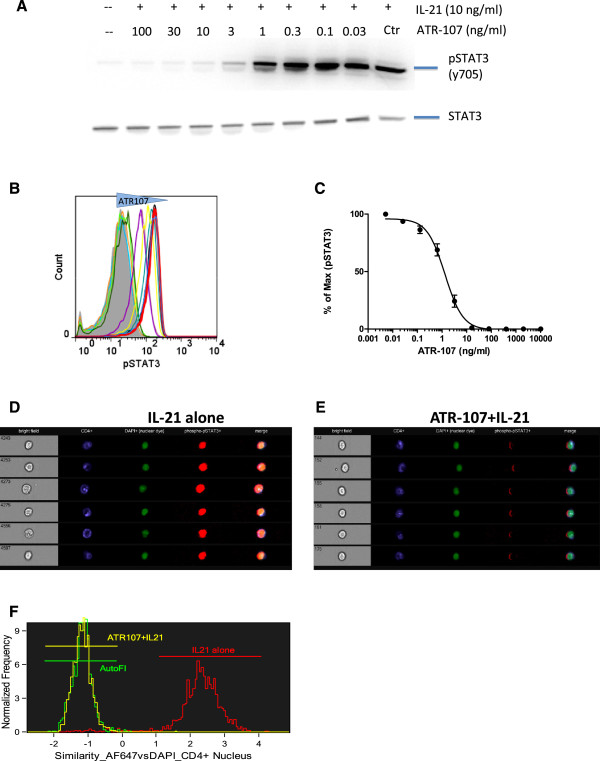Figure 1.
ATR-107 concentration-dependently inhibited IL-21 induced STAT3 phosphorylation. A: Purified T cells from healthy donor peripheral blood were pre-incubated with ATR-107 at concentrations from 0.03 ng/ml to 100 ng/ml or control antibody for 30 minutes, followed by stimulation with IL-21 (10 ng/ml) for an additional 15 minutes. Total and phospho–STAT3 was detected by Western blot. B: Healthy donor whole blood was pretreated with ATR-107 or control Ab for 30 minutes prior to stimulation with 10 ng/ml IL-21 for 15 minutes. Cells were fixed, permeabilized, stained with A647-labeled anti–phospho–STAT-3 antibody, and analyzed using flow cytometry gated on CD4+ T cells. Representative histogram showing the baseline (gray area), IL-21 + control Ab (red line) and IL-21 with various amount of ATR-107. C: Inhibition of ATR-107 on pSTAT3 mean fluorescence intensity (MFI) induced by 10 ng/ml IL-21(n = 6). D: Representative image of 6 individual cells detected by ImageStream cytometer (ISC) after treatment with 10 ng/ml IL-21 for 15 minutes. In addition to the bright field image (left column), cells were stained with CD4 (blue), DAPI (green) and pSTAT3 (red). Merged imaging shows pSTAT3 staining overlap with the nuclear (DAPI) staining (far right column). E: Translocation of pSTAT3 was completely blocked by pre-treatment of the samples with ATR-107 (4.3 ug/mL) for 30 minutes. F: Overlay of similarity of nuclear pixel images of DAPI and AF647 dyes in CD4+ T cells. Autoflurorescence (AutoFl) was a measurement of the sample treated with neither ATR-107 nor IL-21. The data were analyzed by the IDEAs software (Amnis Corporation).

